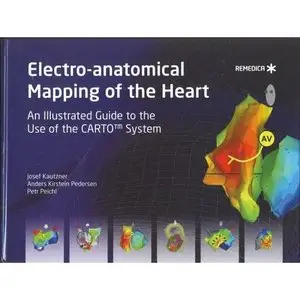Kautzner, Pederson, Peichl, "Electro-anatomical Mapping of the Heart "
Publisher: Not Avail | 2006-09-30 | ISBN 1901346986 | PDF | 160 pages | 2.5 MB
Publisher: Not Avail | 2006-09-30 | ISBN 1901346986 | PDF | 160 pages | 2.5 MB
Mapping of the heart is one of the principal techniques used in the diagnosis and treatment of cardiac arrhythmias. Electrical activity of the heart can be recorded from the body surface (ECG mapping), from the surface of the heart (epicardial mapping) or from the endocardium (endocardial mapping). Signals can be acquired simultaneously from various sites or sequentially, point-by-point, and these data can be visualized in different formats. The power of computer processing opened new horizons in cardiac mapping. The so-called electro-anatomical mapping system (CARTO™, Biosense Webster, Inc., Diamond Bar, CA, USA), developed in the mid-nineties, represents one of the most successful systems for detailed endocardial/epicardial mapping of cardiac arrhythmias. For the first time in history, it allowed superimposition of 3D anatomy and local electrograms. The major advantages of the system comprise direct visualization of the activation pattern of individual arrhythmias, catheter navigation to the desired arrhythmic substrate during radiofrequency ablation and minimal need for fluoroscopy. Since its introduction into the clinical arena, the use of the electro-anatomical mapping system has continued to grow. This book reviews the main clinical applications of the CARTO system, and provides recommendations for the mapping and treatment of a wide range of arrhythmias. We hope that the combined experience of our two centers will provide practical assistance to those just starting to use this system. Besides explanation of basic principles of the mapping procedure, major sections of the book deal with the use of the CARTO system in individual types of arrhythmias. For each arrhythmia, a review of published data is presented together with a recommended strategy for mapping and ablation. All sections are supported by images in order to facilitate the learning process. Finally, the text is accompanied by a selection of the most relevant eferences.



